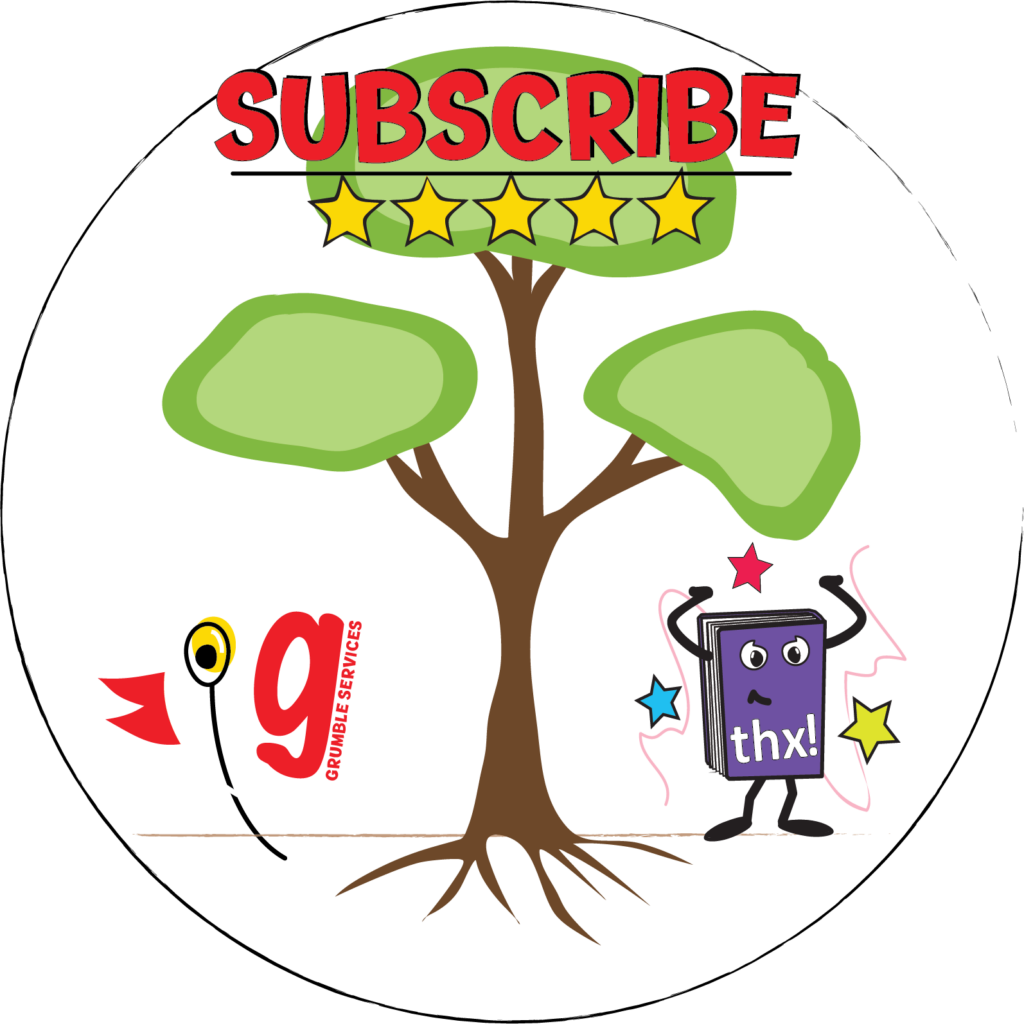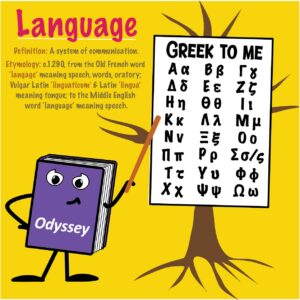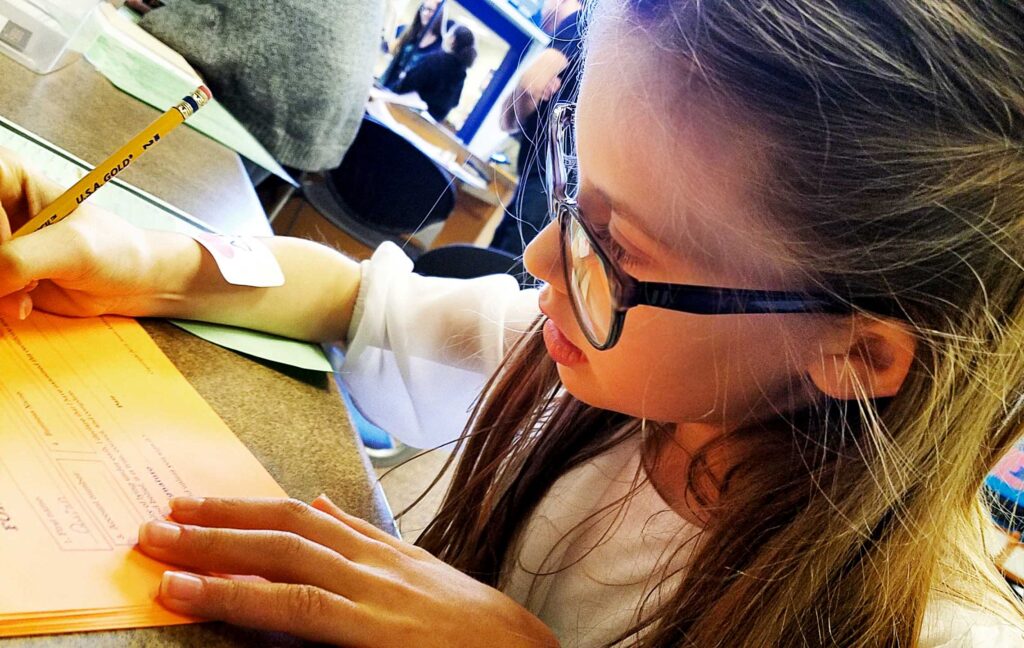How do we help struggling readers?
Skilled Reading: Part One
Skilled Reading: How do we help older students become better readers? I teach upper elementary. This covers 4th, 5th and 6th grades. A question I get asked by my student’s families time and again is, is there anything I can do to help my older child who continues to struggle with reading?
My knee jerk response to this question is always – exposure. In a perfect world, from a very early age, a child will either volunteer to read alone or with an adult. Together, this will expose that child to thousands, if not tens of thousands, of vocabulary words. By the time a child reaches 12 years old, their vocabulary might span over 50,000 words. That’s a lot of words!

But of course, the older the struggling reader, the more resistant they become to reading. The primary reasons behind this are self-explanatory: They have always struggled with reading. They feel very frustrated, embarrassed, maybe even exhausted. Sometimes they might even view themselves as being ‘dumb’ compared to their classmates. This is because they always sense they are behind their peers. Instead, they are stuck in a catch-up mode.
The first time I approached a peer for help with reading was about a decade ago. When asked, my peer shared, “that’s a tough one. To many of us, reading skills and strategies seem to come naturally. We often just teach ourselves to become better readers.”
Written Language is a Code
Teach Children How to Decode it
And from what I have read since, her comments were rather accurate. Early reading skills are taught to most students at an early age. Why? Because our written language is a code; children need to be taught how to decode it. These early skills include phonics, word recognition, vocabulary, decoding and fluency. For one to be a proficient reader, one must possess all these critical skills.
But as readers advance, the development of comprehension skills work differently. Research shows older readers possess specific strategies to construct meaning before, during, and after reading a text. I now know this type of reading to be called “skilled reading.”
The key to skilled reading is being capable of recognizing words without relying on context at all. This finding is well replicated in current research around reading. Skilled readers can read a word in isolation instantly and accurately. This is done by very quickly recognizing a word as a sequence of letters, not as a graphic image.
Skilled Reading is an Active Process
When skilled reading, the reader’s cognizance is constantly processing information mined from the text (such as summarizing a passage or questioning the author). In contrast, struggling readers often unconsciously read the words on the page.
For them, reading is an inactive activity. The strategy of constructing meaning from text does not occur naturally. Instead, they must be given the appropriate tools and then be coached as to how. Sometimes readers are not comprehending text simply because they are following the wrong strategies. Unfortunately, many strategies in practice to this day force struggling readers to take their focus off comprehension.
A Commonly Taught
(but proven wrong) Reading Strategy!
A parent asked me again just this week: “My child wants to be a better reader, but she is frustrated. Nothing really interests her, and she goes back and reads the same books that are too easy.” Our conversation starts the same. We discuss reading topics which might appeal to her, possible book titles that might pique her interest. Then I remembered: She needs to be taught appropriate comprehension strategies. This led me back to an illuminating article I read a few years back on reading.
About two years ago I did some investigation around the importance of daily reading at the elementary level (Reading Just 20 Minutes a day makes a huge Impact!). I stumbled across a 2018 article by The Atlantic called, Why American Students Haven’t Gotten Better at Reading in 20 Years. It discusses what the reasons might be for the lack of progress in American reading scores over 20 years. An expert panel in Washington, D.C concluded that the root of the problem is the way schools teach reading.
Practice Reading Texts Considered
“too difficult” for a Struggling Reader
Many current instructional approaches, they agreed, are based on assumptions about how children learn. Unfortunately, many of these assumptions have been disproved over the past several decades (I’ve always said, once a teacher has their head wrapped around a certain paradigm, it’s very difficult to unwrap it).
The part of the article I find the most interesting is this:
“Panel member Timothy Shanahan, an emeritus professor at the University of Illinois and the author or editor of over 200 publications on literacy—went on to debunk a popular approach that goes hand in hand with teaching comprehension skills: To help students practice their “skills,” teachers give them texts at their supposed individual reading levels rather than the level of the grade they’re in.”
Timothy Shanahan, The Atlantic 2018
Why American Students Haven’t Gotten Better at Reading in 20 Years
According to Shanahan, no evidence backs up this practice. In fact, Shanahan explained, recent research indicates that students learn more from reading texts that are considered too difficult for them—in other words, reading texts with more than a handful of words and concepts a student currently doesn’t understand. Instead, what struggling students need is guidance from adults in how to make sense of texts designed for students at their respective ‘grade levels.’
Students need Exposure
to Grade Level Text!
This is important for reasons more than just catching up to their peers. If students are not exposed to reading texts designed for their respective grade level, then this will become the kind of texts struggling readers might only see on standardized tests. Unfortunately, I’ve seen this play out more than a handful of times. When they must struggle with them on their own, they admonish themselves and it often ends in tears. This will only reinforce their belief that they are simply just not good at reading.
Marilyn Jager Adams, a cognitive and developmental psychologist at Brown University, further endorsed this view. She said, “Giving children easier texts when they’re weaker readers, serves to deny them the very language and information they need to catch up and move on.”
Three Ways to Support Students
Who Struggle with Reading Comprehension
- Build oral vocabulary so when students see those words, they know what they mean
- Vocabulary, vocabulary, vocabulary
- Directly teach struggling readers comprehension thinking strategies.
Build Oral Vocabulary –
When students see those words,
they will know what they mean:
Recent research reveals that reading comprehension difficulties may be rooted in an underlying oral language weakness. This weakness exists from early childhood, before reading is even taught.
It turns out that students who have poor reading comprehension also often understand fewer spoken words and less of what they hear and have worse spoken grammar. Therefore, expose struggling readers to many new and level appropriate vocabulary words orally.
Here’s a vocabulary suggestion for home: Purchase a 365 New Words-A-Year Page-A-Day Calendar 2021 for your family (but make sure it is not too difficult). Each morning discuss that day’s new word together. Ask your child to try and use it in a new sentence. This is a quick and easy way to encourage learning new and higher-level vocabulary words each day!
Vocabulary, Vocabulary, Vocabulary:
My students moan when they hear me say this. However, I can’t emphasize enough how important it is to expose young and older readers to new vocabulary. Students with poor comprehension often have poor vocabulary skills and understand less of what they hear. In addition to spoken word, seeing these new words on paper is the next critical step.
Improving their overall language skills increases the likelihood they will understand the words they come across in written text. Since it is impossible to know every word one might encounter, teach different types of ‘context clues’ and how to use them to determine the meaning of unknown words.
One type of context clue I recommend is word study. As discussed last week, looking at words through structure and etymology allows children to discover the origins of words, why they are spelled the way they are and to see connections among words within a word family.
Most importantly, it can stir curiosity within young learners, encouraging them to delve more deeply into the nuances of our language.
These are the precise skills readers need to use word parts in predicting the meaning of new, more complex vocabulary words. In fact, analyzing meaningful word parts aligns with ELA Common Core Standard CCSS.ELA-Literacy.CCRA.L.4: Determine or clarify the meaning of unknown and multiple-meaning words and phrases by using context clues, analyzing meaningful word parts, and consulting general and specialized reference materials, as appropriate.
Directly Teach
Comprehension Thinking Strategies:
Students should be directly taught comprehension skills to achieve skilled reading. Skills such as sequencing, how to make an inference and to draw a conclusion from it and the different types of figurative language. Students should have the opportunity to first practice these skills with text they hear read aloud. Later, they should apply these strategies to text they read independently and at an age appropriate level.
Once students have the vocabulary to be able to make it through a text, they often struggle with the complex thinking or sustained attention. This is required to keep up with all the important details. As a result, they are often not able to access information implied but not directly stated.
Choosing the Appropriate
Strategies at Home
Students can be taught to successfully read a broad range of challenging and difficult texts. This is accomplished by helping them develop deeper levels of comprehension. It’s important to choose the appropriate strategies for your child depending on their needs. And remember, this is a fluid process. Those needs might change or move around in a nonlinear way.
The most effective way for students to learn comprehension skills is through direct instruction. This can be directed by a teacher in the classroom or by an adult at home. Use the strategies that work best for them depending on the text they’re reading. Pulling deeper meaning out of text through the use of thinking strategies can be beneficial not just to reading comprehension but also to writing.
Before choosing a strategy, consider these questions:
- What skill does my child need to strengthen before, during or after reading the text?
- What kind of text should I select to achieve this goal?
- Has my child experienced this type of text before?
- What part or parts of the text may challenge my child the most?
- What supports can be provided to my child (such as key words and vocabulary)
before reading the text? - How can I model the chosen strategies to my child?
Comprehension Thinking Strategies
There are multiple comprehension thinking strategies available to struggling readers. Next week I will go into greater depth as to how they function. Strategies to achieve skilled reading include:
- Activating: Many researchers believe this is the most important strategy for reading comprehension. Another term for this is ‘background knowledge.’
- Summarizing: Students restate the purpose and meaning of a text in their own words.
- Monitoring and Clarifying: Students determine if they understand the text. If there are misunderstandings, they clarify and correct the confusion during and after reading a text.
- Visualizing and Organizing: Students create mental images of the text. Graphic organizers help to provide structure and allow students to generate ideas from the text.
- Searching and Selecting: Students gather information from various resources to select. This allows them to define key words, answer questions, or solve problems.
- Questioning: Students create questions about the text, ask themselves questions while reading the text, and answer different levels of questions about the text from their peers and/or teacher.
- Inferring: Students interpret the text and draw logical conclusions.
Reading and interpreting multiple forms of texts can be an overwhelming task. Fortunately, students can learn the comprehension thinking strategies of skilled readers. This practice takes time and patience. By implementing these strategies, students can progress from dependent, inactive readers to highly skilled thinkers who independently process information from a text.
Do you have thoughts on Skilled Reading? Do you have a suggestion for another blog topic? Please send me an email with your ideas or experiences at grumble.services@gmail.com.
If you find this article helpful, please share it. Or better yet, please join us if you have yet to do so. Subscribe below and receive articles like this one in your email box weekly. Thank you!
Read More: Skilled Reading: Part Two
How to teach comprehension thinking strategies
All Rights Reserved • © 2021 Grumble Services LLC • grumbleservices.com

References and Read More:
Why American Students Haven’t Gotten Better at Reading in 20 Years
by Natalie Wexler, The Atlantic (April 2018)
How to Reach Older Struggling Readers
by Christine Pitts (February, 2020)
At a Loss for Words How a flawed idea is teaching millions of kids to be poor readers
by Emily Hanford, APMReports (August 2019)
How Do Kids Learn to Read? What the Science Says
by Sarah Schwartz & Sarah D. Sparks, EducationWeek (October 2019)
40 Ways to Support Struggling Readers in Content Classrooms, Grades 6-12
Book by Elaine McEwan




